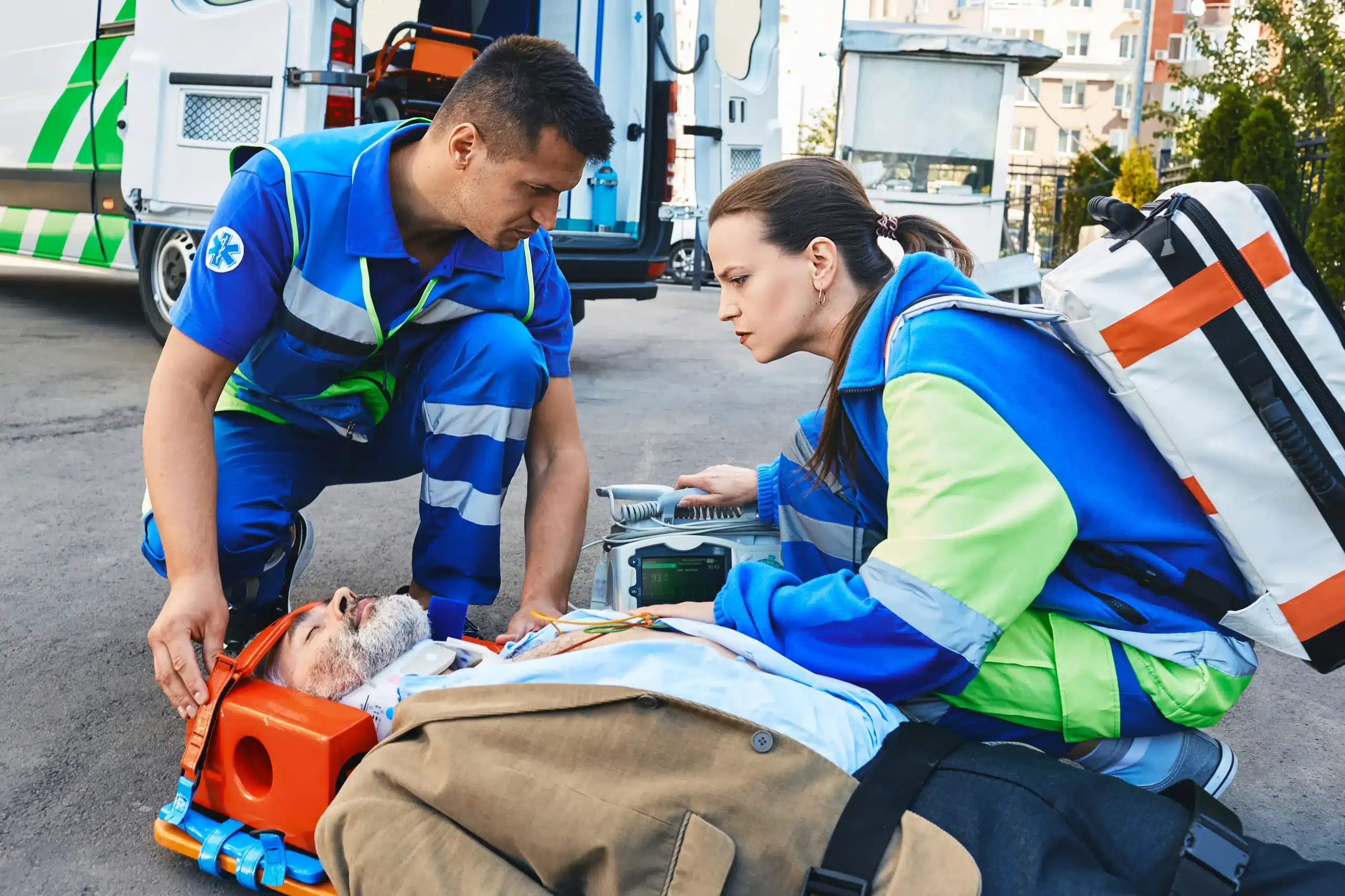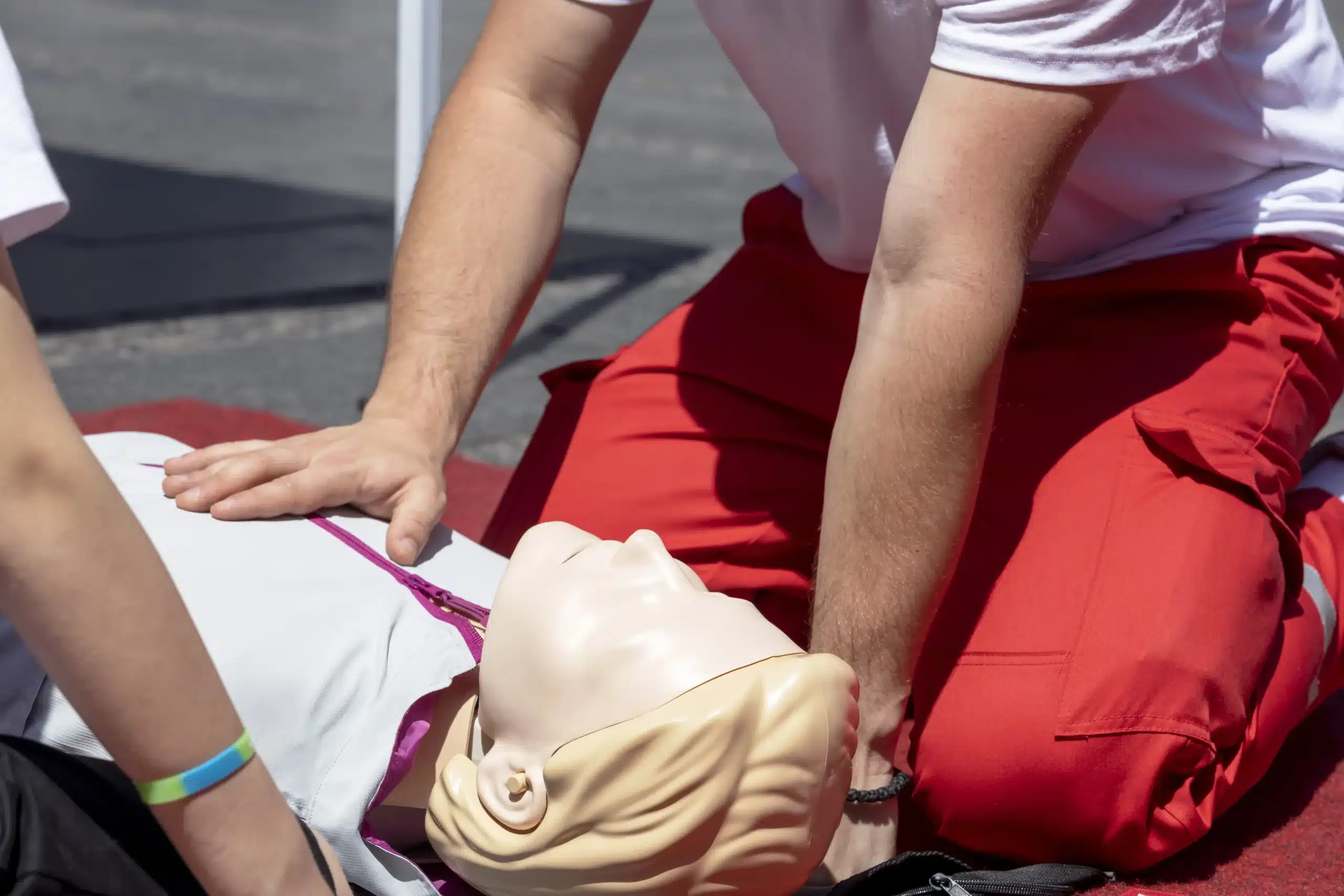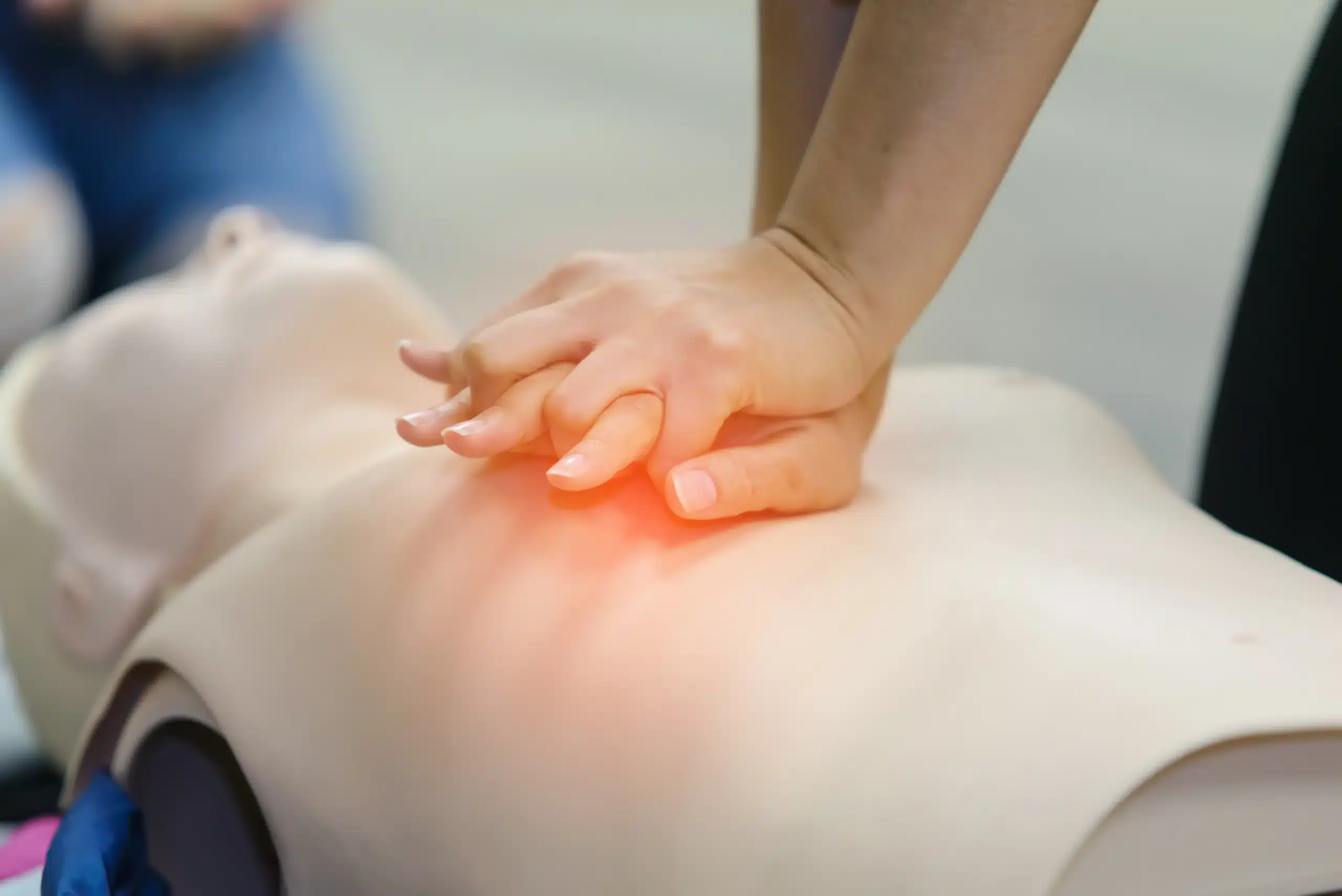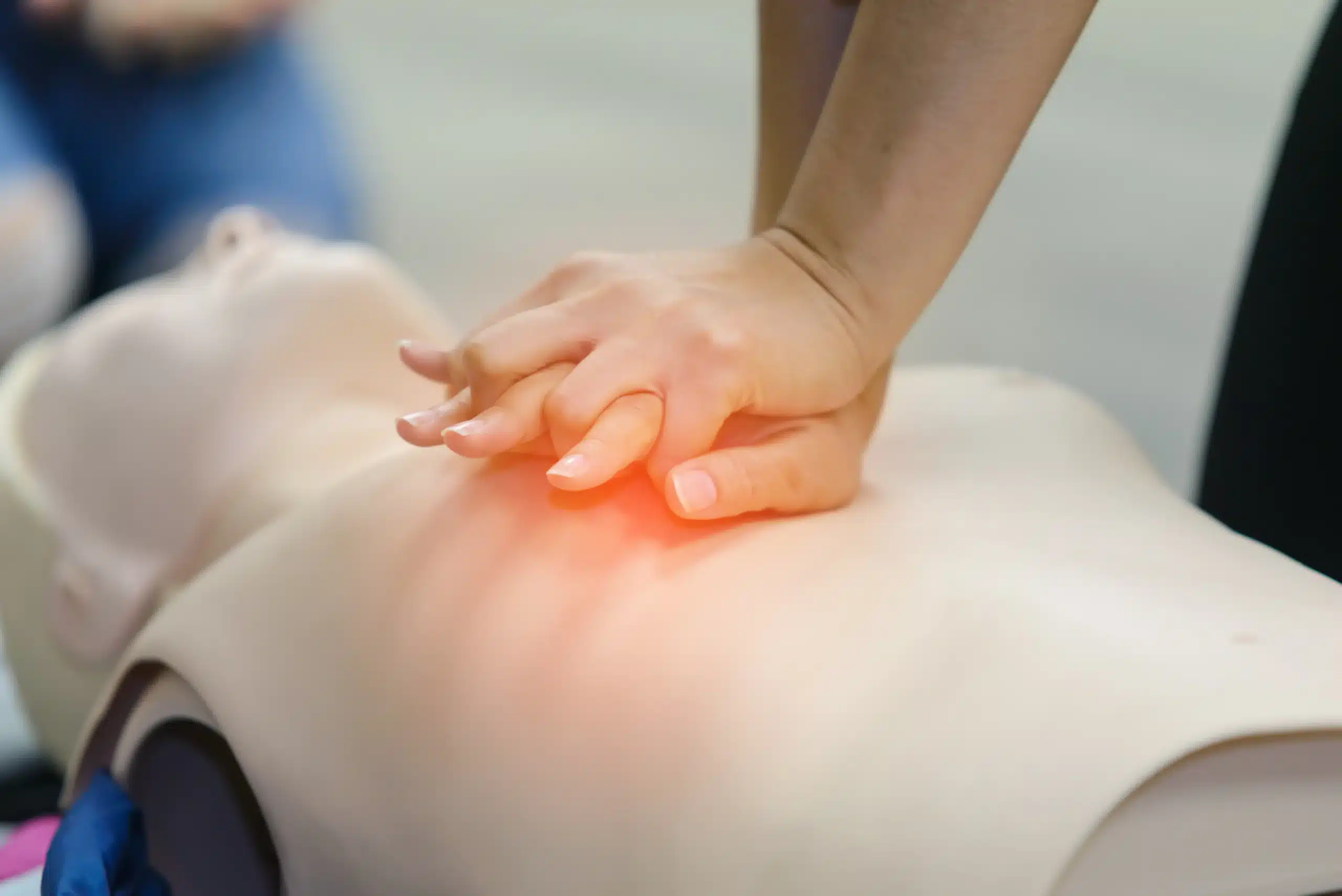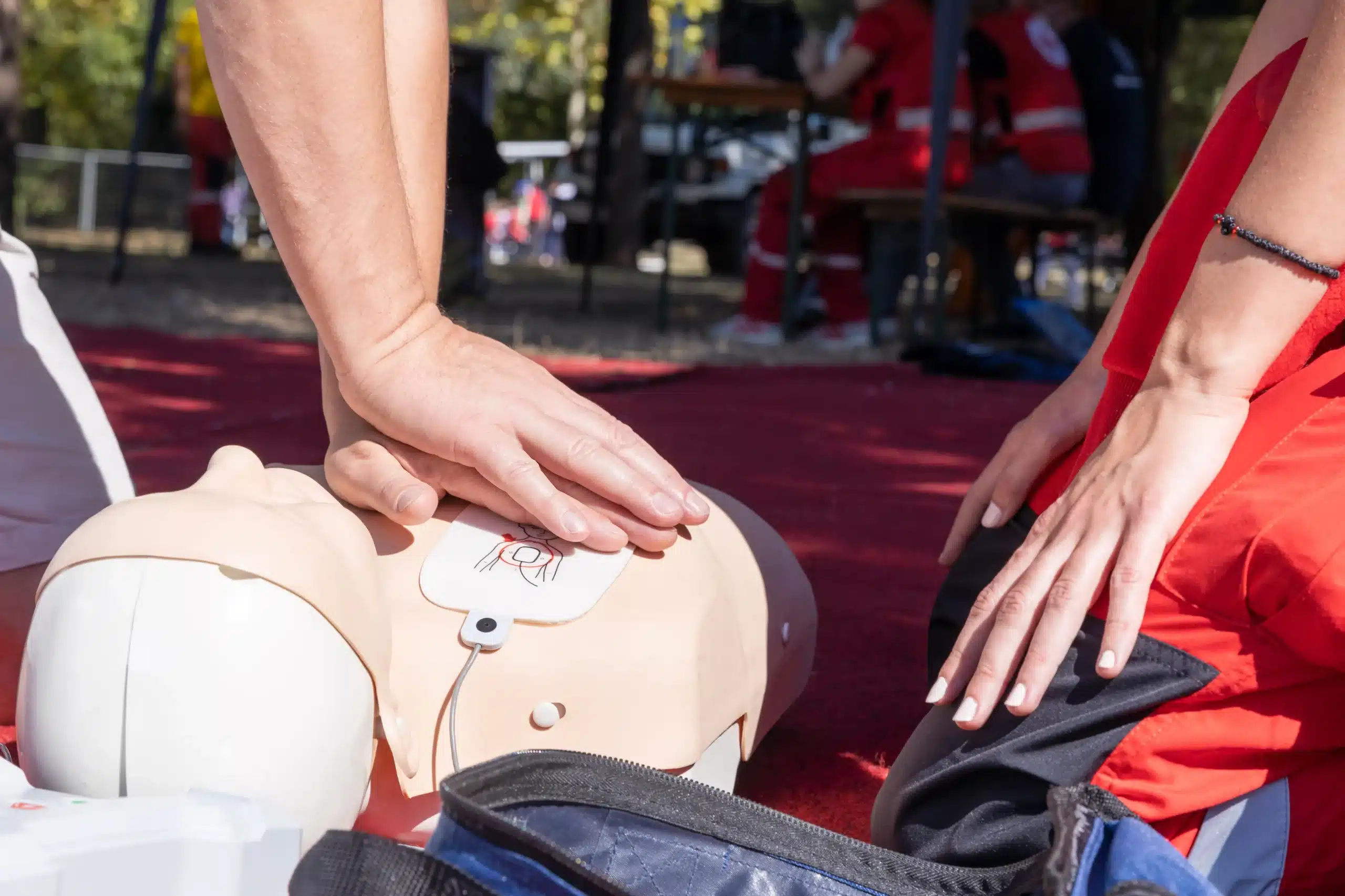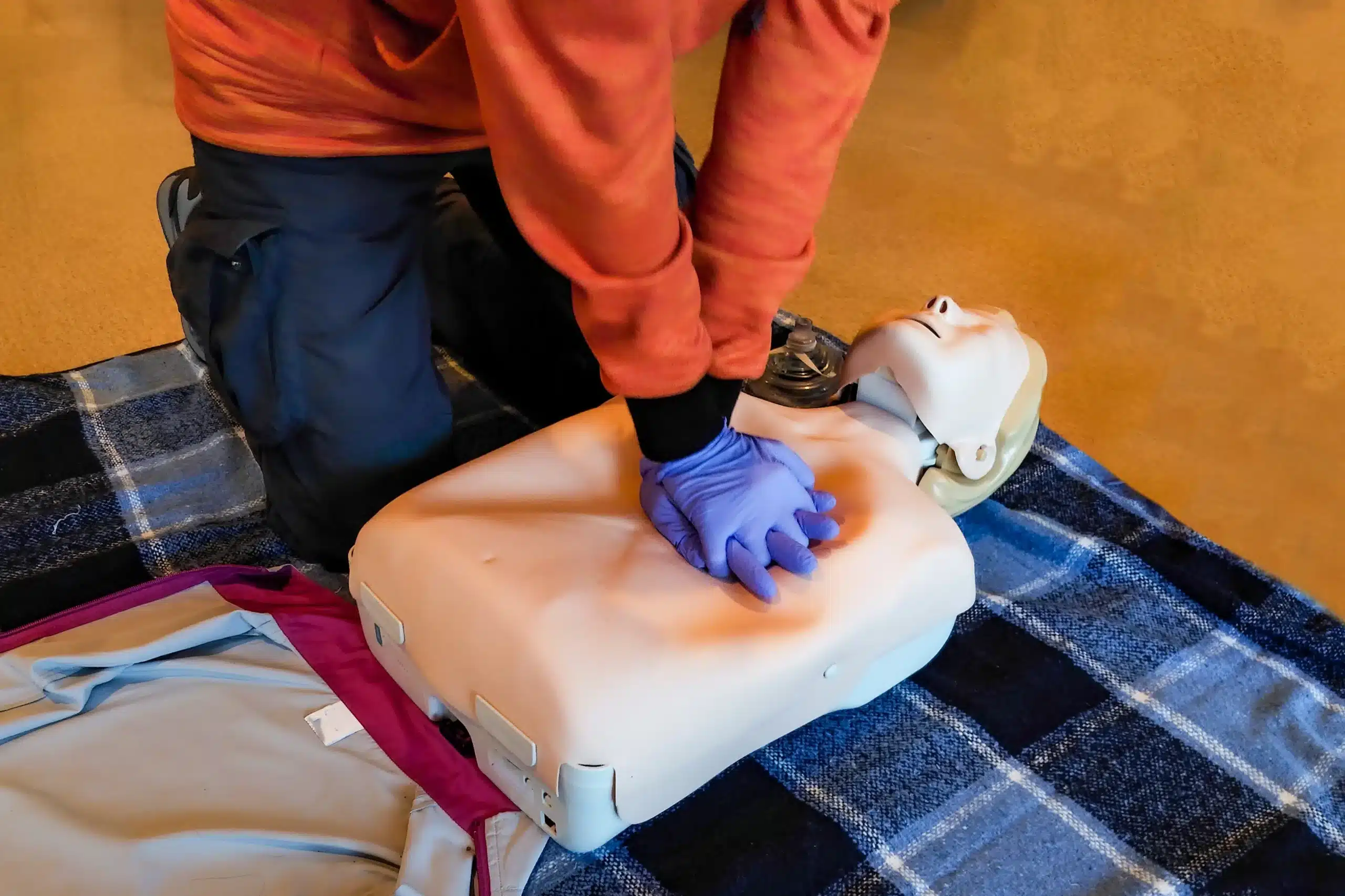Empowering yourself with CPR skills can make you a valuable asset in your community and workplace. This guide provides a comprehensive overview of CPR training, covering everything from course types and certification levels to finding affordable options near you. We’ll explore the essential differences between BLS, ACLS, PALS, and First Aid, helping you choose the right course based on your individual needs. Whether you’re a healthcare professional, a parent, or simply someone who wants to be prepared for emergencies, this guide will equip you with the knowledge to make informed decisions. We’ll also discuss various learning formats, essential CPR skills, and practical tips for finding CPR courses near me that align with your schedule and budget.
Key Takeaways
- Find the Right CPR Course for Your Needs: From basic to advanced certifications, CPR courses cater to all skill levels and schedules. Explore options like BLS, ACLS, and PALS to find the best fit, and consider online, in-person, or blended learning formats.
- Choose Accredited Training and Check Reviews: Ensure your training meets national standards by selecting programs from reputable organizations like the American Heart Association or Red Cross. Reading reviews and testimonials can provide valuable insights into the quality of different courses and instructors.
- CPR Training Prepares You for Real-World Emergencies: Gain the confidence to respond effectively in critical situations through hands-on practice and real-world simulations. You’ll learn essential skills, from assessing a victim’s condition to performing compressions and using an AED.
What are the Different CPR Courses?
CPR courses equip you with the skills to respond effectively during medical emergencies, potentially saving lives in your community. This section explores the various types of CPR courses available, including BLS, ACLS, PALS, and First Aid. Understanding the distinctions between these courses will help you choose the right one for your needs.
CPR Course Types and Certification Levels
Several CPR certifications cater to different levels of expertise and professional requirements. Basic Life Support (BLS certification) teaches fundamental CPR skills, AED use, and basic airway management. It’s often a prerequisite for more advanced certifications and is suitable for healthcare providers, first responders, and anyone interested in learning essential lifesaving skills. Advanced Cardiovascular Life Support (ACLS certification) builds upon BLS, focusing on advanced techniques for managing cardiovascular emergencies. Pediatric Advanced Life Support (PALS) is tailored to healthcare professionals who treat infants and children. First Aid courses teach how to manage injuries and illnesses in various situations, complementing CPR skills.
Online, In-Person, and Blended Learning
CPR classes are offered in various formats to suit different learning styles and schedules. Online courses provide flexibility, allowing you to learn at your own pace from anywhere with an internet connection. In-person classes offer hands-on training and direct interaction with instructors. Blended learning combines the convenience of online coursework with the practical experience of in-person skills sessions. This hybrid approach allows you to learn the theoretical aspects online and then practice your skills in a real-world setting. For more information on CPR class formats, you can explore resources like the Red Cross CPR training page.
Essential CPR Skills You’ll Learn
Regardless of the specific course you choose, certain essential skills form the foundation of CPR training. You’ll learn how to assess a victim’s condition, perform chest compressions, provide rescue breaths, and use an automated external defibrillator (AED). BLS training emphasizes these core skills, empowering you to respond effectively in medical emergencies. More advanced courses like ACLS and PALS build upon these fundamentals, adding specialized techniques for specific medical scenarios. Mastering these skills can give you the confidence to act quickly and decisively in a crisis.
How Do I Find the Right CPR Course?
So, you’re ready to learn CPR? Great! Finding the right course is the first step. Here’s what to consider:
Find Accredited CPR Providers
Start by looking for training programs from nationally accredited providers. Organizations like the American Heart Association and the Red Cross set the standard for high-quality CPR instruction. Make sure any program you choose aligns with these standards so you receive excellent training. Safety Training Seminars offers American Heart Association certification through the RQI program. This ensures that your training meets the highest national standards.
Evaluate Course Offerings and Schedules
CPR training isn’t one-size-fits-all. Different courses cater to various needs and skill levels. Do you need Basic Life Support (BLS)? Or are you a healthcare provider seeking Advanced Cardiovascular Life Support (ACLS) or Pediatric Advanced Life Support (PALS)? Consider which course best suits your situation. Also, think about the class schedule. Finding a time that works for you is essential. Safety Training Seminars offers daily classes, making it easier to fit CPR training into your busy schedule.
Check Reviews and Testimonials
Before committing to a course, see what other students say. Online reviews and testimonials offer valuable insights into the quality of instruction and the overall learning experience. Reading about other people’s experiences can help you decide if a particular course or instructor is right for you. Look for comments about the instructors, the course materials, and the overall class atmosphere. For those seeking affordable options, Safety Training Seminars offers group discounts and maintains a low price guarantee.
What Happens During CPR Training?
CPR training blends theory and hands-on practice, giving you the skills and confidence to handle emergencies. Here’s what to expect:
Course Length and Time Commitment
Most CPR courses work around busy schedules. A typical CPR/AED course for non-healthcare providers lasts about 2.5–3 hours. This covers the essentials without a major time commitment. Healthcare providers seeking certifications like ACLS or PALS should expect longer courses due to the advanced content.
Hands-on Practice and Real-World Scenarios
Effective CPR training goes beyond the books. Expect hands-on practice with mannequins and real-world simulations. This builds muscle memory and confidence, preparing you for high-pressure situations. In-person training ensures you meet professional licensing and OSHA requirements. You’ll learn to assess situations, perform chest compressions, give rescue breaths, and use an AED.
Certification Process and Validity
After completing an accredited CPR course, such as those from Safety Training Seminars, you’ll receive a two-year certification. This shows your CPR proficiency and is renewable through refresher courses. Online-only courses may offer a certificate of completion, but double-check it meets your workplace requirements. For healthcare professionals, a current CPR certification is often mandatory for employment. RQI programs offer a flexible way to maintain your skills and certification.
How Can I Make CPR Training Affordable?
Typical CPR Course Costs
CPR training costs vary depending on the course type and your location. Basic CPR classes for the general public typically range from $30 to $50. More specialized courses, like BLS for healthcare providers, generally cost between $60 and $90. Pediatric CPR training often falls within a similar price range as basic CPR. Checking with various providers is always wise, as prices can differ.
Group Discounts and Budget-Friendly Choices
One way to save on CPR training is to sign up with a group. Many training centers offer discounts for groups of five or more. This can be a great option for families, community groups, or businesses certifying multiple employees. Another budget-friendly choice is exploring streamlined programs like the RQI program, which offers convenient and cost-effective CPR recertification for healthcare professionals. Also, keep an eye out for special promotions or discounts that training providers may offer.
Local CPR Course Providers
Finding a reputable local CPR training provider is key to getting high-quality instruction at a reasonable price. Here are a few places to start your search:
Safety Training Seminars
Safety Training Seminars offers a comprehensive range of CPR and first-aid courses, including BLS, ACLS, PALS, and First Aid. They are known for their commitment to affordable training options and convenient daily classes in various locations. Check their website for group discounts and a low-price guarantee.
American Heart Association
The American Heart Association (AHA) is a leading authority on CPR training and certification. They offer various courses, including BLS, ACLS, and PALS, often through local training centers. AHA certification is widely recognized and respected in the healthcare field. You can find an AHA-certified course near you on their website.
Red Cross
The American Red Cross also provides CPR and first-aid training courses across the country. They offer various course formats, including online, in-person, and blended learning options. Check their website to find a class in your area and explore their different learning modalities.
Local Hospitals and Community Centers
Local hospitals and community centers frequently offer CPR training classes to the public. These classes are often more affordable than those offered by private training companies. Contact your local hospital or community center to inquire about upcoming CPR training.
Fire Departments and EMS Agencies
Many fire departments and EMS agencies provide CPR training to residents as part of their community outreach. These courses are sometimes offered free or at a reduced cost. Reach out to your local fire department or EMS agency to see if they offer CPR training classes.
Related Articles
- BLS, ACLS, PALS, CPR & First-aid Classes in Palo Alto, CA
- ACLS Courses in Palo Alto: The Complete Guide – Palo Alto CPR Classes
- CPR Courses in Redwood City: A Complete Guide – Palo Alto CPR Classes
- Online CPR Classes in Menlo Park: Your Guide – Palo Alto CPR Classes
- CPR Certification in Palo Alto: Your Guide – Palo Alto CPR Classes
Frequently Asked Questions
What’s the difference between BLS, ACLS, and PALS? BLS (Basic Life Support) teaches fundamental CPR and AED use for anyone, including healthcare providers and the general public. ACLS (Advanced Cardiovascular Life Support) builds on BLS, focusing on advanced techniques for healthcare professionals managing cardiovascular emergencies. PALS (Pediatric Advanced Life Support) is specifically designed for healthcare providers treating infants and children.
How long does it take to get CPR certified? A typical CPR/AED course takes about 2.5-3 hours. More advanced certifications like ACLS and PALS require a longer time commitment due to the complex nature of the content. Renewal courses are typically shorter as they focus on refreshing existing skills.
How much does CPR training cost? Costs vary based on the course type, location, and training provider. Basic CPR classes usually range from $30 to $50, while more specialized courses like BLS for healthcare providers can cost between $60 and $90. Look for group discounts or special promotions to save on costs.
How do I find a reputable CPR training provider? Start by looking for training centers affiliated with nationally recognized organizations like the American Heart Association or the Red Cross. Check online reviews and testimonials to gauge the quality of instruction and the overall learning experience. Consider factors like class schedules, location, and cost when making your decision. Don’t hesitate to contact the provider directly with any questions.
What if I have a busy schedule? Are there flexible training options? Absolutely! Many providers offer various class times, including evenings and weekends, to accommodate busy schedules. Online courses provide flexibility for learning at your own pace, while blended learning combines online coursework with in-person skills sessions. RQI programs offer a streamlined approach to maintaining CPR skills and certification for healthcare professionals.

